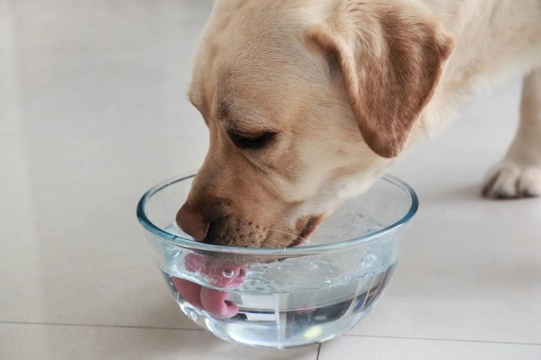
Five important things to know about dehydration in dogs in summer
Dehydration can develop quickly in dogs, particularly in the summer when the weather is really hot, and even a small amount of exertion can feel like very hard work. This article will tell you five important things you need to know about dehydration in dogs in the summer, including how to tell if a dog is dehydrated and what to do about it if they are. Read on to learn more.
How would I know if my dog was dehydrated?
The easiest way to tell if a dog (or a person) is acutely dehydrated is to perform the “pinch test.” This involves finding an area of your dog’s skin that is a little flexible but not loose (so no the jowls, nor an area with natural body wrinkling like pugs and English bulldogs have; the skin on the shoulder is a good spot on most dogs) and lightly pinching the skin of this area into a peak and then releasing it immediately.
The skin should spring straight back into its previous position (try it on the back of your hand) but if it moves back more slowly, this indicates that the skin itself isn’t hydrated enough and so that you (or the dog) are dehydrated.
However, a dog has to be acutely dehydrated before their skin loses moisture enough to allow this to happen; and so you should be alert to a combination of things that can indicate a situation arising that could result in dehydration.
This includes excessive panting; and things like haring around for long periods of time without drinking, especially when it is hot.
Also, if a dog’s gums are sticky, tacky, or dry rather than moist, and if they have thick, foamy drool or slobber, this tends to indicate dehydration too.
As dehydration progresses to serious stages, your dog’s eyes may appear sunken, they will be reluctant or unable to move, and may collapse.
How do dogs get dehydrated?
Put simply, dehydration occurs when the dog doesn’t drink enough water to replace the water their bodies naturally lose.
Panting, passing water, natural evaporation and so on all dehydrate the body continually, but drinking as and when needed balances this out. If your dog cannot or does not drink enough water to replace that which they lose, they will become dehydrated.
How much water the dog’s body loses and so, how much they need to drink can vary too; dogs fed dry food need to drink more, and dogs need to drink more in hot weather and when exercising hard.
Dehydration can also occur as a secondary effect of a number of health conditions too, either because it speeds up the rate at which your dog’s body loses water, or makes them reluctant to drink; or to keep water down. Heatstroke, diarrhoea, vomiting, and any condition involving fever or a raised temperature all come with a risk of dehydration too.
Wouldn’t a dog just drink if they needed to?
Generally yes; a healthy dog with free access to water isn’t likely to get dehydrated, but there are a number of factors and scenarios that mean that this may not always work out as it should.
Dogs drink more in summer and so may have emptied their bowl faster than normal, which can see them left without water until someone notices. If your dog has knocked over their bowl or it is contaminated, they may not have access to anything to drink either.
If your dog is out in the garden with you, ensure they’re not closed out of the house and so, their bowl; and if they’re lazing about in the heat, they may feel too lethargic to go and get a drink as often as they should.
A dog that is actually overheating may not seek out water either, and may even refuse it if offered.
What should I do if my dog is dehydrated?
What to do if a dog is dehydrated depends in large part on how badly they’re dehydrated and what else is going on too.
If the dehydration is serious enough that your dog is unresponsive or slow to respond, cannot get up, or has sunken eyes, contact your vet as they will almost certainly need IV fluid therapy as well as potentially other care too.
If your dog is also showing signs of heatstroke or having gone into shock, this requires veterinary intervention as well.
However, if your dog is alert, otherwise ok, not overheating, and willing to drink, simply offering them water promptly (room temperature, not cold) and ensuring that they have plenty available from then on is important. You may also need to help your dog’s body to replace electrolytes lost through dehydration too, which your vet can advise on.
Don’t let a dog that is really thirsty gulp water or drink a huge amount in one go; this is apt to lead to them throwing up, worsening the issue. Let them drink for a few seconds, wait a minute, and offer them more wate; proceed in this way until your dog drinks calmly or pauses between drinks.
Also, bear in mind that your dog could refuse water even if they’re dehydrated, such as if they’re overheating or suffering from heatstroke. This refusal is easy to read as them not being thirsty; but in fact, it means that the extent of their dehydration is actually more acute than you can handle at home, so once more, contact your vet.



